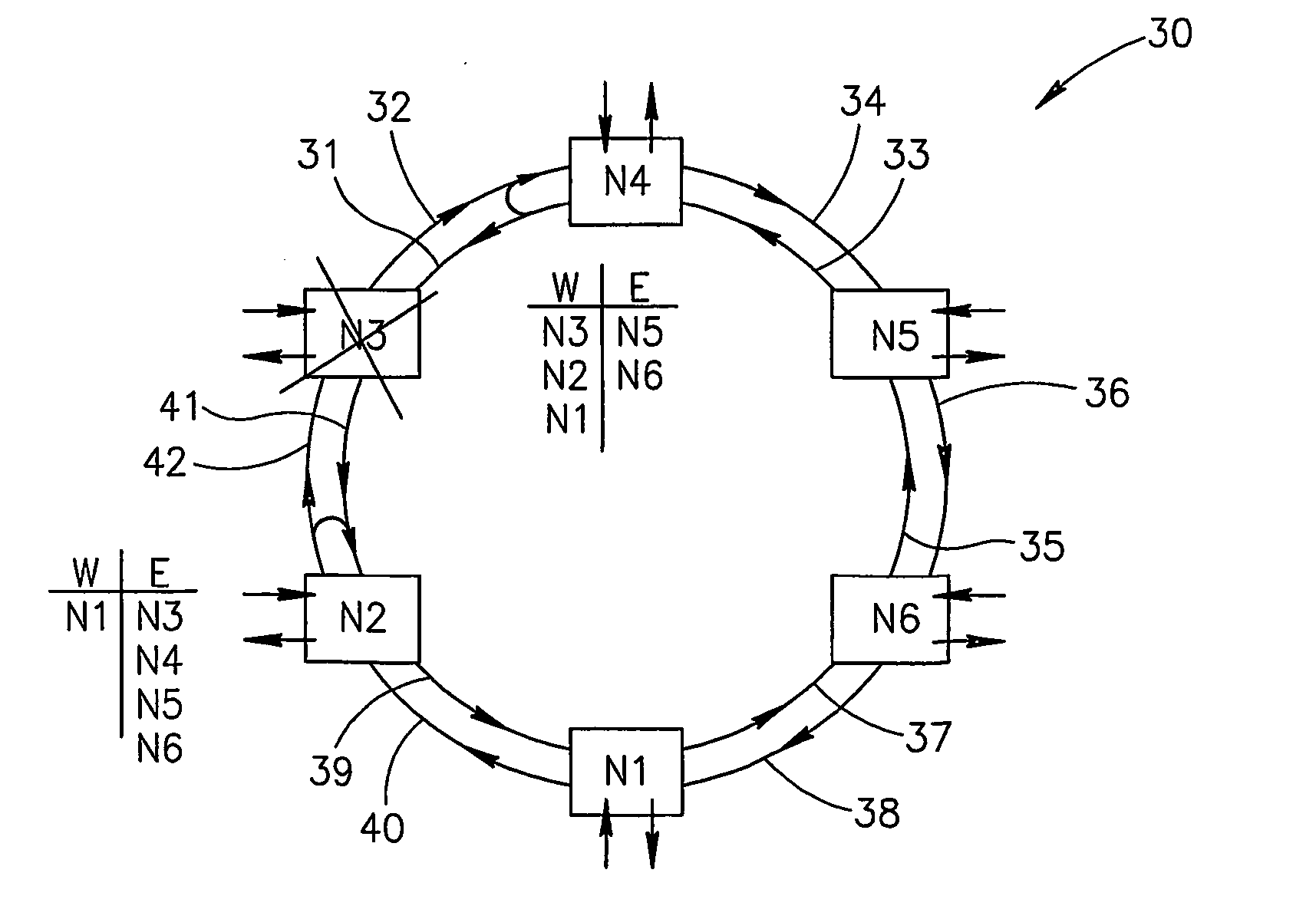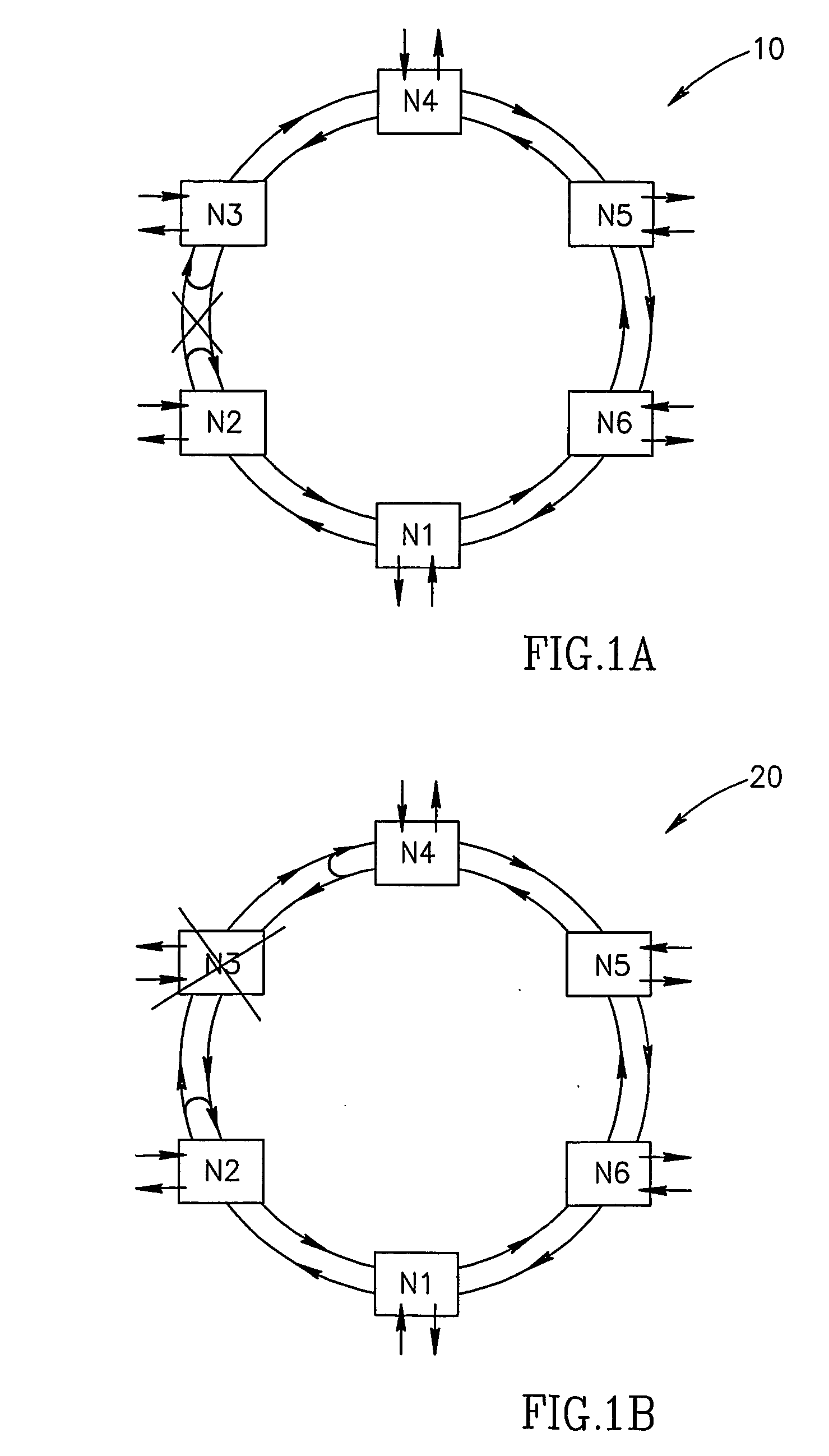Method for protection of ethernet traffic in optical ring networks
a technology of optical ring network and ethernet traffic, applied in data switching network, time-division multiplexing selection, instruments, etc., can solve the problems of ineffective protection of ethernet data, sdh traffic, inability to protect ethernet traffic, etc., and achieve the effect of avoiding additional complex software tools
- Summary
- Abstract
- Description
- Claims
- Application Information
AI Technical Summary
Benefits of technology
Problems solved by technology
Method used
Image
Examples
example 1
[0064] A particular Ethernet packet was addressed to node N4, it has arrived to N4 and is dropped to the customer of this node. If another packet is added at node N4 and is to be forwarded to another node (say, node N6), it is forwarded to the direction where that another node is located according to information known to the node N4 (to the East).
[0065] If a packet came from node N5 and, according to its destination address, is to be forwarded to node N3 which is now in the state of “isolated node”, it will be launched by the node N4 to the West outgoing fiber 31. Since the node N4 output to fiber 31 is connected to the node N4 input from fiber 32, the packet will return to node N4, but via the protective route of the clockwise direction ring (protective capacity of the even-numbered fibers). In this case, the address of the packet is not checked in the nodes and it flows freely up to node N2 where it is again redirected, now back to the main route. At node 42, the packet of the ma...
example 2
[0066] A packet sent from node N1 to Node 3 arrives to Node 2, where the traffic is redirected to the protective capacity of the internal ring of the odd-numbered fibers. It is then forwarded up to the node N4 without checking, since nodes just pass such packets through. Node 4, upon redirecting the packet to the main path in the outer ring of even-numbered fibers, recognizes that the direction from which it arrived to the node (from West) is the direction to which the packet is to be sent (see the East-West table of node 4). The packet will then be thrown away.
[0067] It should be noted, that the intrinsic Ethernet features, combined with the proposed method, enable throwing away also the Ethernet packets which originated at the isolated node(s).
[0068] In a small percentage of faults, namely when isolated sections are created, a number of Ethernet packets may remain circulating in one of such sections, though being intended for another section of the network. This phenomenon is ex...
PUM
 Login to View More
Login to View More Abstract
Description
Claims
Application Information
 Login to View More
Login to View More - R&D
- Intellectual Property
- Life Sciences
- Materials
- Tech Scout
- Unparalleled Data Quality
- Higher Quality Content
- 60% Fewer Hallucinations
Browse by: Latest US Patents, China's latest patents, Technical Efficacy Thesaurus, Application Domain, Technology Topic, Popular Technical Reports.
© 2025 PatSnap. All rights reserved.Legal|Privacy policy|Modern Slavery Act Transparency Statement|Sitemap|About US| Contact US: help@patsnap.com



